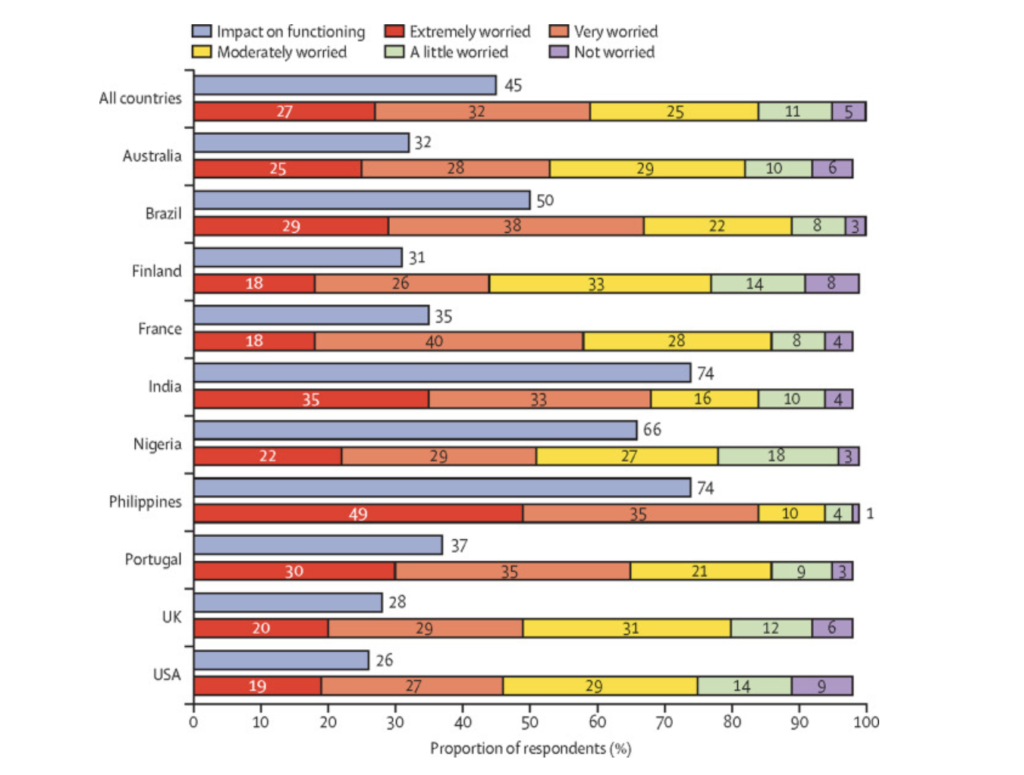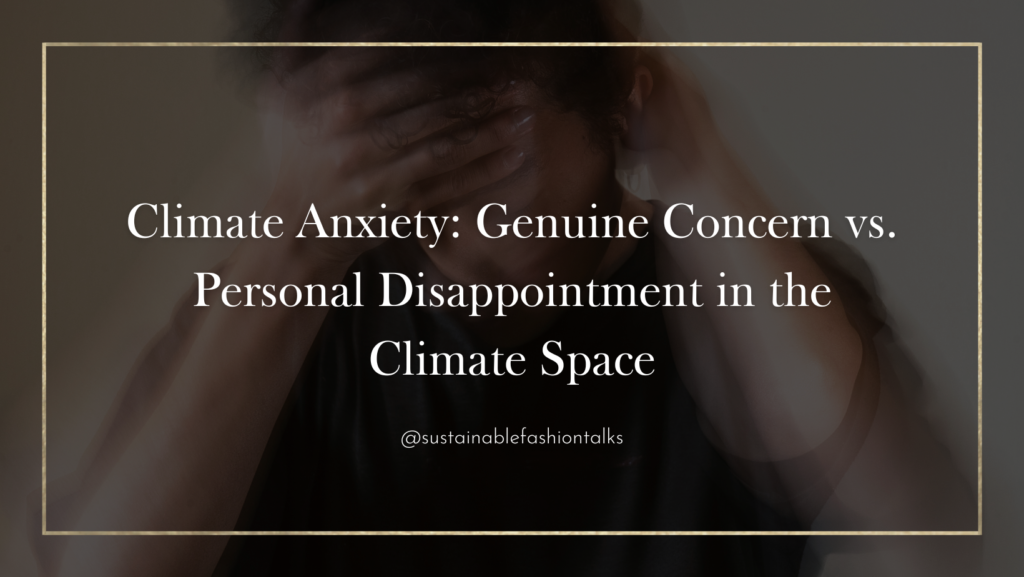Anxiety and climate anxiety are terms often used interchangeably, yet they stem from different sources and manifest in unique ways. This distinction is important, especially for individuals navigating the climate space. After a few years of observation, I would like us to explore what these terms truly mean, how they differ, and the importance of managing one’s expectations when engaging in climate activism.
Understanding General Anxiety
Anxiety is a natural response to stress, characterized by feelings of worry, nervousness, or unease about something with an uncertain outcome. It’s a broad term surrounded by various conditions, including generalized anxiety disorder (GAD), social anxiety, and panic disorder. According to the National Institute of Mental Health (NIMH), about 19.1% of U.S. adults had any anxiety disorder in the past year, reflecting its widespread nature.
What is Climate Anxiety?
Climate anxiety, also known as eco-anxiety, is the chronic fear of environmental doom. It’s not just an abstract worry; it’s grounded in the real, observable impacts of climate change. Young people, in particular, are widely affected by this climate anxiety. In 2021 I read a survey published in The Lancet. The survey found that 59% of young people reported feeling “very or extremely worried” about climate change, with over 45% saying their feelings negatively affected their daily lives. Read more on www.thelancet.com/journals

The Difference: Genuine Climate Anxiety vs. Personal Disappointment
People often enter the climate space with various motivations – career advancement, free travel opportunities, gaining popularity, or proving someone wrong. While these motivations can drive positive action, they can also lead to personal disappointment anxiety when these expectations aren’t met. This form of anxiety stems from unmet personal gains, not the reality of climate change itself.
Let’s highlight the Key Differences:
-
Source of Anxiety:
- Climate Anxiety: Arises from genuine concern about environmental degradation and the future of the planet.
- Personal Disappointment Anxiety: Stems from unmet personal goals or expectations within the climate space.
-
Impact:
- Climate Anxiety: Leads to feelings of helplessness regarding environmental issues and can fuel activism.
- Personal Disappointment Anxiety: May result in disillusionment, frustration, or a sense of failure within the climate movement.
Managing Expectations in the Climate Space
To those entering the climate space, it’s essential to manage expectations. Understand that real impact often comes with seemingly slow progress and initial setbacks. Be prepared for challenges and losses before eventual gains.
Steps to Manage Expectations:
- Set Realistic Goals: Focus on achievable and meaningful objectives rather than personal awards.
- Cultivate Resilience: Understand the journey will have ups and downs; resilience is key.
- Seek Community: Engage with like-minded individuals and support networks to stay motivated.
- Stay Informed: Continually educate yourself about climate issues to keep the larger picture in focus.
Resources for Support
If you or someone you know is struggling with anxiety or climate anxiety, it’s important to seek help. Here are some resources:
- Anxiety and Depression Association of America (ADAA):www.adaa.org
- National Alliance on Mental Illness (NAMI):www.nami.org
- Mind.org: Support for mental health issues, including anxiety. www.mind.org.uk
- Yale Program on Climate Change Communication: Offers insights into climate and environmental psychology. www.climatecommunication.yale.edu
- Climate Psychology Alliance:Provides support and resources for those experiencing climate anxiety. www.climatepsychologyalliance.org
